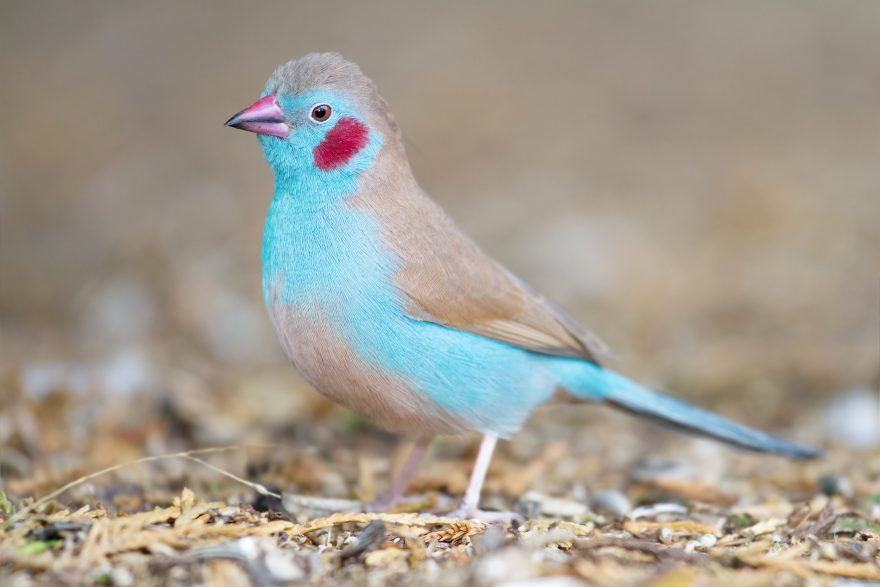Red-cheeked cordon bleu waxbills are a small blue estrildid finches indigenous to Africa. They are immensely popular in aviculture and are considered to be among the most commonly kept exotic finch species. They are not a species suitable for beginners due to their dietary requirement of live insects.

Housing & Compatibility
Red-cheeked cordon bleu waxbills are peaceful birds that do well in a mixed finch aviary with other placid species. They do best as one pair per aviary, however multiple pairs can be housed together in very large aviaries that allow each pair to establish a distinct territory.
They should not be mixed with other members of the Cordon Bleu family, as hybridization will occur. Red-cheeked cordon bleu hens and Blue-capped cordon bleu hens are very difficult to distinguish between, so the two subspecies should always be housed apart.
Cordon Bleu finches will not breed without privacy, so a large planted aviary that provides plenty of hiding places is ideal. They prefer to construct their own nests in thick shrubs or grasses.
Diet & Feeding
A quality seed mix including canary seed, various millets and panicum, forms the basis of the cordon bleu waxbill’s diet. Seed lacks many essential vitamins and minerals which must be compensated for by introducing other foods. Sprouting seed increases its nutritional value and is a cheap way to improve your birds health. Freshly grown green seed heads should also be offered frequently. Red pannicum is particularly beloved by this species.
Some leafy green should be provided throughout the year. Kale, bok choy, endive and silverbeet are the most nutritious and will be readily eaten. Spinach can also be given, but only sparingly as it can contribute to calcium deficiency.
Cordons will require a large amount of live food when breeding. Mealworms, small crickets and white ants are commonly fed. Commercial soft finch food mixes can also be provided for an added nutrient boost, particularly when breeding. Egg and Biscuit mix is a favorite.
Do not feed anything from the list of forbidden foods.
Breeding
Best breeding results are achieved in spring and autumn with a hen bird that’s at least 12 months of age. Better breeding results are usually achieved in the second year of breeding. These birds demand privacy to breed successfully and will not tolerate nest inspections.
A wide variety of artificial nests will be accepted, though they have a preference for dense brush well above ground level. They will construct a nest from fine strands of dry grass. Occasionally they will refurbish abandoned nests—either their own previous breeding attempts or those that belonged to other birds.
Do not house the different Cordon waxbill subspecies together as they may produce hybrids.
They typically lay 3-6 eggs in each clutch, which are incubated by both parents for approximately 14 days. Young birds fledge the nest at three weeks of age and are usually independent after a further three weeks. Adult plumage is attained at three months of age.
Sexing
Only male red-cheeked cordon bleus have red cheeks. They can be visually sexed after two or three months of age.
Health
Red-cheeked cordon hens are unusually prone to egg binding, especially in winter. A source of calcium—either as grit, cuttlefish bone, or a commercial supplement—should be provided during the cooler months.
The cordon bleu waxbill’s diet is high in live food, making them especially vulnerable to parasite infection. A strict worming and parasite control regime should be implemented to ensure their long-term health.
Healthy birds can be expected to reach approximately 7-9 years of age.